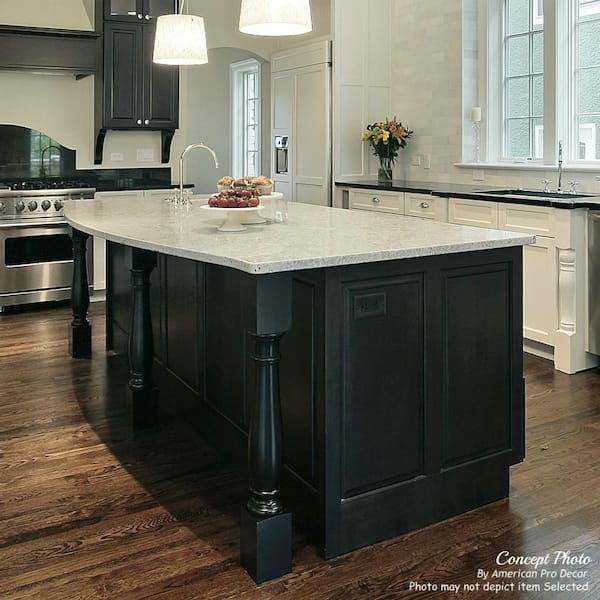Custom Kitchen Island Legs to Match Your Kitchen Aesthetic
Custom Kitchen Island Legs to Match Your Kitchen Aesthetic
Blog Article
Necessary Tips for Picking the Perfect Table for Your Cooking Area
Choosing the perfect eating table for your kitchen area is even more than simply an issue of preference; it requires a complete understanding of your room and requirements. The shape of the table plays an essential function; while rectangle-shaped tables fit larger locations, round ones foster affection, and extendable choices provide flexibility. The table needs to integrate with your kitchen's aesthetic appeals and accommodate your family members pleasantly.
Step Your Room
Picking the perfect eating table starts with a thorough assessment of your available area. This fundamental action guarantees that the table not only fits comfortably within the room but also complements the overall layout and functionality of your dining location.
Consider the circulation of activity around the table. It is crucial to leave ample room for chairs to be taken out and for individuals to walk around the table without obstruction. A general guideline of thumb is to enable at the very least 36 inches of clearance from the side of the table to the nearby wall or piece of furniture. This ensures convenience of access and convenience throughout dishes.
Additionally, think concerning the number of individuals you normally amuse and whether you need added area for guests. Going with an extendable table can offer adaptability, permitting you to accommodate differing numbers of restaurants. By accurately gauging your space, you prepared for choosing a table that boosts both the aesthetic appeals and functionality of your eating area.
Choose the Right Forming

On the other hand, round tables are excellent for smaller sized kitchen areas or intimate celebrations, as they promote conversation by enabling every person to face each other. They also give a feeling of comfort and can fit well in tighter areas as a result of their absence of sharp corners. Oblong tables use the very best of both worlds, incorporating the size of rectangular tables with the intimacy of round ones, making them versatile for various settings.
Square tables are one more alternative, particularly suited for square-shaped areas. They create a balanced and modern appearance, cultivating an equivalent dining experience for all seated.
Product Considerations
When selecting an eating table, material considerations are extremely important in figuring out the table's resilience, upkeep needs, and total aesthetic. Wood is a timeless option, offering timeless appeal and toughness.
Glass-topped tables provide a modern-day, smooth appearance and can make an area appear larger because of their transparency. Nevertheless, they this need regular cleaning to stop finger prints and smudges. In addition, toughened up glass is advised for its extra toughness and safety.

Last but not least, composite materials like MDF (Medium-Density Fiberboard) or plywood are affordable choices. These materials can imitate the appearance of strong timber but have a peek here may not provide the very same durability. They are generally simpler to tidy however can be prone to water damage otherwise appropriately sealed.
Inevitably, the option of product must align with your cooking area's style, your lifestyle requires, and your budget restraints. (kitchen island legs)
Seating Ability and Comfort
Just how do you determine the ideal seats capacity and convenience for your eating table? For a family members of four, a rectangle-shaped table of 48 inches long or a round table with a 48-inch diameter is normally adequate.
Convenience is equally necessary. The elevation of the table should ideally be around 30 inches, offering a balanced ergonomic stance for seated diners. Chairs must sit elevation of 18 to 20 inches to make certain a comfy eating stance. Additionally, consider the chair design; upholstered seats and supportive backrests can improve dining comfort considerably, particularly during extended meals.
Style and Looks
Choosing a table that suits your style and visual appeal involves balancing personal taste with the existing style of your eating area. The dining table is commonly the focal point of the kitchen area, and its style must enhance the overall theme of the room. Whether your cooking area flaunts a modern, minimalist look or a rustic, farmhouse beauty, the table you choose must harmonize with these elements to create a cohesive and inviting atmosphere.
Consider products thoroughly; timber supplies a classic appeal and can range from rich mahogany for a conventional seek to lighter oak for a contemporary feeling. Steel and glass tables, on the various other hand, can introduce a smooth, industrial side to your kitchen area. Don't ignore the table's form-- rectangle-shaped tables are traditional and functional, while round and oval options can foster an extra intimate eating experience.
Furthermore, pay click reference attention to coatings and details. A troubled finish could add personality and heat, whereas a glossy surface area can add to a tidy, modern-day aesthetic. Inevitably, your table should not just fit perfectly right into your kitchen's layout but likewise reflect your personal design, elevating the area both functionally and aesthetically.
Conclusion
In conclusion, choosing the suitable eating table for a cooking area demands mindful evaluation of space, shape, material, seating capacity, and visual consistency. Inevitably, an appropriate eating table cultivates an inviting environment and fits the house comfortably, therefore improving the eating experience.

When picking a dining table, product factors to consider are vital in identifying the table's durability, upkeep needs, and general visual. For a family of 4, a rectangle-shaped table of 48 inches long or a round table with a 48-inch size is typically adequate.
Don't neglect the table's form-- rectangle-shaped tables are classic and functional, while round and oblong alternatives can foster a more intimate eating experience. kitchen island legs.
Report this page